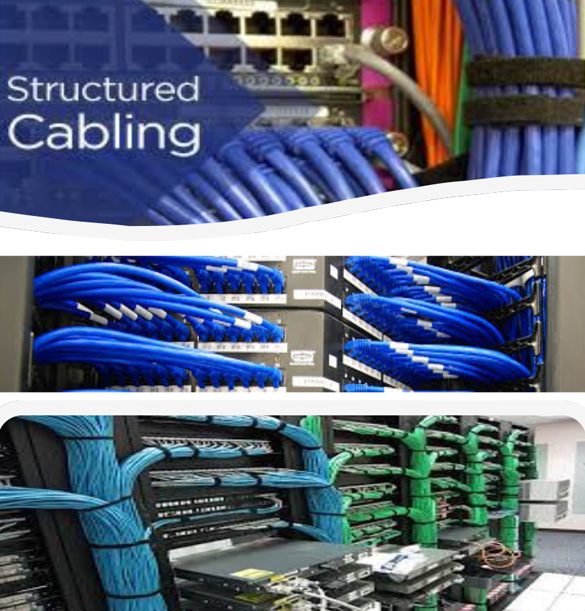Advantages of having Organized LAN Cabling
Some of the obvious benefits of investing in structured network cabling include;
- Reduced Risk of downtime;
- Isolation of faulty systems;
- Greater consistency and flexibility
- Scalability
- Easier implementation of unified communications and security
- Supports future upgrades – the modular design makes moves, adds and changes in a snap!
- Reduces install time – by allowing for efficient changes and upgrades
- Reduces cabling bulk and congestion – an organized and planned infrastructure allows for the use of smaller diameter trunk cabling and cleaner cable management
- Improves airflow – reduced congestion decreases the chances of blocked airflow and crushed cables
- Reduces power and cooling usage and cost

Greater Bandwidth
Copper Cables were originally designed for voice transmission and have a limited bandwidth. Fiber optic cables provide more bandwidth or carrying more data than copper cables of the same diameter. Within the fiber cable family, singlemode fiber delivers up to twice the throughput of multimode fiber
Lower Total Cost of Ownership
Although some fiber optic cables may have a higher initial cost than copper, the durability and reliability of fiber can make the total cost of ownership (TCO) lower. And, costs continue to decrease for fiber optic cables and related components as technology advances
Faster Speeds
Fiber optic cables have a core that carries light to transmit data. This allows fiber optic cables to carry signals at speeds that are only about 31 percent slower than the speed of light—faster than Cat5 or Cat6 copper cables. There is also less signal degradation with fiber cables
Better Reliability
Fiber is immune to temperature changes, severe weather and moisture, all of which can hamper the connectivity of copper cable. Plus, fiber does not carry electric current, so it’s not bothered by electromagnetic interference (EMI) that can interrupt data transmission. It also does not present a fire hazard like old or worn copper cables can.
Longer Distances
Fiber optic cables can carry signals much farther than the typical 328-foot limitation for copper cables. For example, some 10 Gbps singlemode fiber cables can carry signals almost 25
Thinner and Sturdier
Compared to copper cables, fiber optic cables are thinner and lighter in weight. Fiber can withstand more pull pressure than copper and is less prone to damage and breakage.
More Flexibility for the Future
Media converters make it possible to incorporate fiber into existing networks. The converters extend UTP Ethernet connections over fiber optic cable. Modular patch panel solutions integrate equipment with 10 Gb, 40 Gb and 100/120 Gb speeds to meet current needs and provide flexibility for future needs.